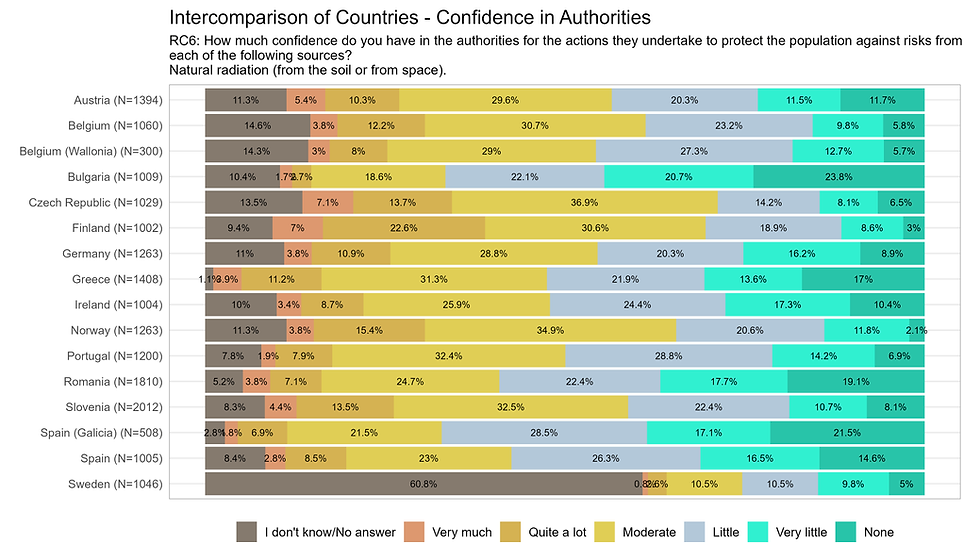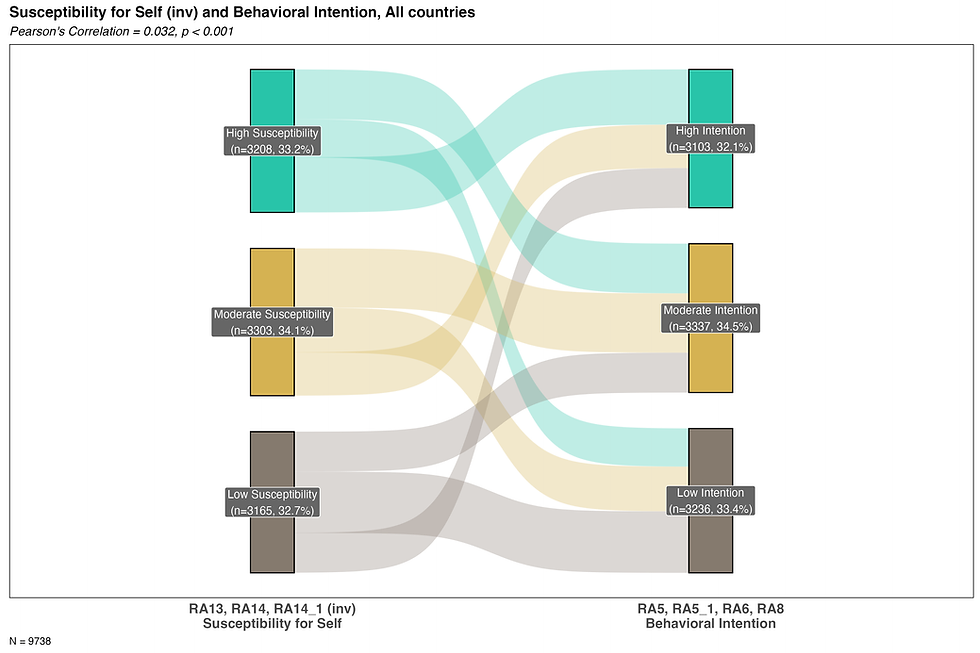
Findings for
Intercomparison of Countries
Cite as:
Perko T. (2025): RadoNorm European Radon Behavioural Atlas, H2020 project RadoNorm, No 900009 https://www.radonorm.eu/
Methodology
The RadoNorm European Radon Behavioral Atlas is the largest and most comprehensive cross-national study to date examining behaviors, attitudes, and awareness related to radon exposure across Europe. The dataset comprises 17,253 respondents, with an average interview duration of 21 minutes and includes over 250 survey items. Data collection occurred from 2021 to 2024, beginning with a pilot study in Belgium and concluding in Portugal. The study spans 15 European countries—Austria, Belgium, Bulgaria, Czech Republic, Finland, Germany, Greece, Ireland, Norway, Portugal, Romania, Slovenia, Spain, Sweden—as well as selected sub-national regions (e.g., Wallonia in Belgium and Galicia in Spain).
Data were collected using Computer-Assisted Web Interviewing (CAWI) in all countries except Bulgaria, where Computer-Assisted Personal Interviewing (CAPI) was employed. In each country, quota sampling ensured national representativeness by gender, age group, and level of urbanization. Post-stratification weights based on education level were applied to correct for sampling imbalances; these weights are included in the open-access dataset.
Respondents were primarily recruited from national probability-based or high-quality access panels, with the exception of the Czech Republic, where participants were drawn from a national radon concentration monitoring survey. The survey instrument was originally developed in English, then translated into the respective national languages, and subsequently back-translated into English by independent translators to ensure semantic equivalence and conceptual clarity across languages.
The survey was administered in collaboration with national authorities responsible for radon risk management and action plans in each participating country. The resulting Atlas provides an empirically grounded, cross-national overview of radon-related behavioral patterns, offering valuable insights into public engagement, risk perception, and gaps in home testing and remediation practices.
Data collection was carried out by contracted market research companies in each participating country. The overall coordination of data collection was managed by SCK CEN and the University of Antwerp (Belgium). Data analysis was conducted by SCK CEN, while data visualization was developed collaboratively by the Elektroinštitut Milan Vidmar (Slovenia) and SCK CEN (Belgium). Ethical approval for the study was obtained from national ethics committees where available. In countries without a national ethics committee, ethical guidance was provided by the RadoNorm Ethics Committee. All procedures were conducted in accordance with the ethical requirements outlined in the European Commission’s guidelines for research in the social sciences and humanities, ensuring respect for participants’ rights, dignity, and data protection. All data are open and available in the STORE database.
Download the questionnaire PDF here.
Download Common statistical scale characteristics and correlations with behavioural intention here.
Results
Radon protection behaviour
Are people aware of radon and do they test and mitigate?




Intention to protect from radon
What is the public willingness to adopt radon protection measures?




Radon awareness
Are people aware of radon?

Is radon indoor seen as an important topic?
Salience

Radon Knowledge
How much people know about radon?

Risk perception
How do people perceive radiological, radon and other risks?



Confidence in authorities for risk management
To what extent do people have confidence in their authorities' ability to manage risks?



Severity
What are people's beliefs regarding the seriousness of negative consequences due to radon?

Susceptibility
Do people believe that radon increases the likelihood of health consequences?

Do individuals believe dwelling remediation is effective in reducing radon concentration?
Response efficacy: remediation


Self-efficacy
Do residents have confidence in their own ability to conduct radon testing and mitigation effectively?

Perceived behavioural control: financial and other burden and ease
Is radon testing and mitigation perceived as a financial or other burden?




Subjective norms
Do family members and friends of resopondents care about radon-related issues?

Descriptive norms
Is radon testing and mitigation a common practice within social groups?

Information comprehensiveness
Is there enough information readily accessible?


Radon spa
To what extent do people agree or disagree with statements about radon spas?





Factors Influencing Behavioural Intention
Radon awareness


Formative knowledge



Risk perception


Confidence in authorities for risk management


Severity

Susceptibility


Response efficacy: remediation


Self efficacy


Perceived behavioural control: financial and other burden and ease



Perceived cost



Aesthetic impact of remediation works on a dwelling

Economic impact of radon on a property value

Subjective norms

Descriptive norms

Moral norms

Moral values

Social influence

Health effect perception

Stigma

Information processing



Information comprehensiveness

Information uncertainty

Affective response to information

